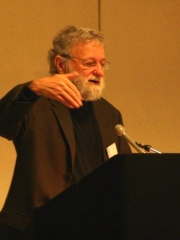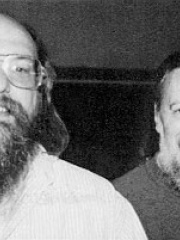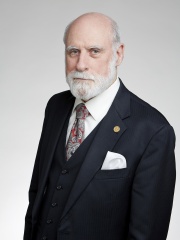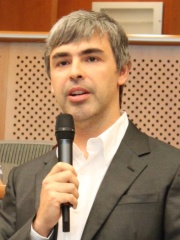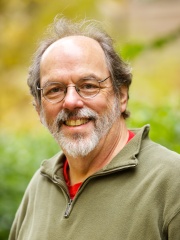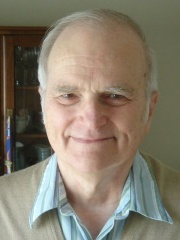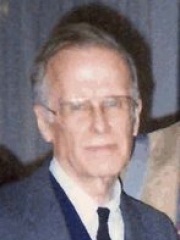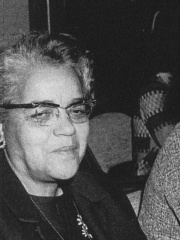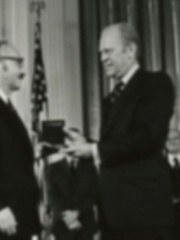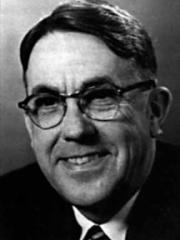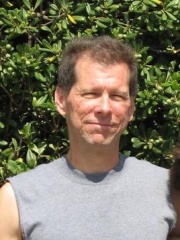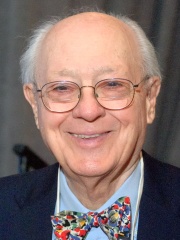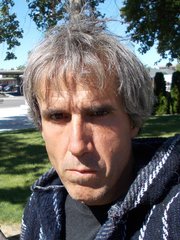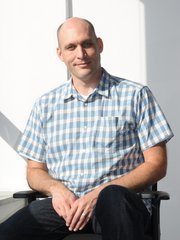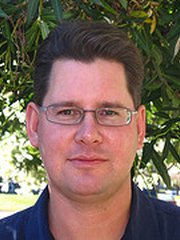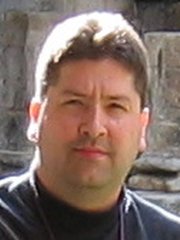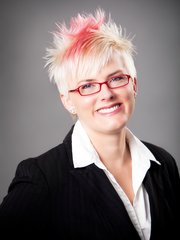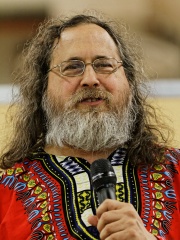
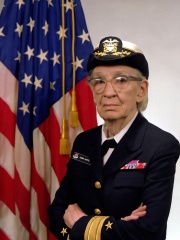
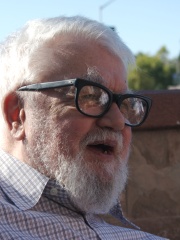
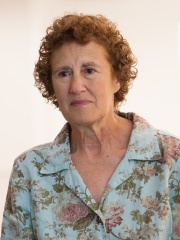
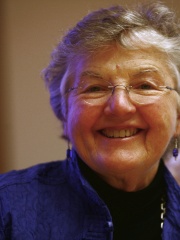
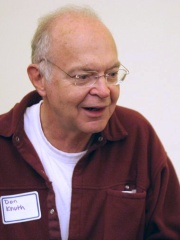
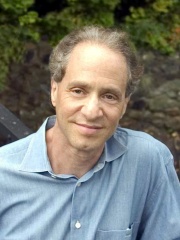
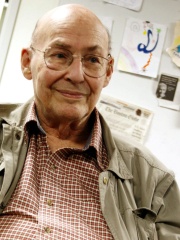
The Most Famous
COMPUTER SCIENTISTS from United States
This page contains a list of the greatest American Computer Scientists. The pantheon dataset contains 245 Computer Scientists, 136 of which were born in United States. This makes United States the birth place of the most number of Computer Scientists.
Top 10
The following people are considered by Pantheon to be the top 10 most legendary American Computer Scientists of all time. This list of famous American Computer Scientists is sorted by HPI (Historical Popularity Index), a metric that aggregates information on a biography's online popularity. Visit the rankings page to view the entire list of American Computer Scientists.

1. Richard Stallman (b. 1953)
With an HPI of 80.58, Richard Stallman is the most famous American Computer Scientist. His biography has been translated into 107 different languages on wikipedia.
Richard Matthew Stallman ( STAWL-mən; born March 16, 1953), also known by his initials, rms, is an American free software movement activist and programmer. He campaigns for software to be distributed in such a manner that its users have the freedom to use, study, distribute, and modify that software. Software which ensures these freedoms is termed free software. Stallman launched the GNU Project, founded the Free Software Foundation (FSF) in October 1985, developed the GNU Compiler Collection and GNU Emacs, and wrote all versions of the GNU General Public License. Stallman launched the GNU Project in September 1983 to write a Unix-like computer operating system composed entirely of free software. With that he also launched the free software movement. He has been the GNU project's lead architect and organizer, and developed a number of pieces of widely used GNU software including among others, the GNU Compiler Collection, GNU Debugger, and GNU Emacs text editor. Stallman pioneered the concept of copyleft, which uses the principles of copyright law to preserve the right to use, modify, and distribute free software. He is the main author of free software licenses which describe those terms, most notably the GNU General Public License (GPL), the most widely used free software license. In 1989, he co-founded the League for Programming Freedom. Since the mid-1990s, Stallman has spent most of his time advocating for free software, as well as campaigning against software patents, digital rights management (which he refers to as digital restrictions management, calling the more common term misleading), and other legal and technical systems which he sees as taking away users' freedoms; this includes software license agreements, non-disclosure agreements, activation keys, dongles, copy restriction, proprietary formats, and binary executables without source code. In September 2019, Stallman resigned as president of the FSF and left his visiting scientist role at MIT after making controversial comments about the Jeffrey Epstein sex trafficking scandal. Stallman remained head of the GNU Project, and in 2021 returned to the FSF board of directors and others.

2. Grace Hopper (1906 - 1992)
With an HPI of 80.29, Grace Hopper is the 2nd most famous American Computer Scientist. Her biography has been translated into 73 different languages.
Grace Brewster Hopper (née Murray; December 9, 1906 – January 1, 1992) was an American computer scientist, mathematician, and United States Navy rear admiral. She was a pioneer of computer programming. Hopper was the first to devise the theory of machine-independent programming languages, and used this theory to develop the FLOW-MATIC programming language and COBOL, an early high-level programming language still in use today. She was also one of the first programmers on the Harvard Mark I computer. She is credited with writing the first computer manual, "A Manual of Operation for the Automatic Sequence Controlled Calculator." Before joining the Navy, Hopper earned a Ph.D. in both mathematics and mathematical physics from Yale University and was a professor of mathematics at Vassar College. She left her position at Vassar to join the United States Navy Reserve during World War II. Hopper began her computing career in 1944 as a member of the Harvard Mark I team, led by Howard H. Aiken. In 1949, she joined the Eckert–Mauchly Computer Corporation and was part of the team that developed the UNIVAC I computer. At Eckert–Mauchly she managed the development of one of the first COBOL compilers. She believed that programming should be simplified with an English-based computer programming language. Her compiler converted English terms into machine code understood by computers. By 1952, Hopper had finished her program linker (originally called a compiler), which was written for the A-0 System. In 1954, Eckert–Mauchly chose Hopper to lead their department for automatic programming, and she led the release of some of the first compiled languages like FLOW-MATIC. In 1959, she participated in the CODASYL consortium, helping to create a machine-independent programming language called COBOL, which was based on English words. Hopper promoted the use of the language throughout the 60s. The U.S. Navy Arleigh Burke-class guided-missile destroyer USS Hopper was named for her, as was the Cray XE6 "Hopper" supercomputer at NERSC, and the Nvidia GPU architecture "Hopper". During her lifetime, Hopper was awarded 40 honorary degrees from universities across the world. A college at Yale University was renamed in her honor. In 1991, she received the National Medal of Technology. On November 22, 2016, she was posthumously awarded the Presidential Medal of Freedom by President Barack Obama. In 2024, the Institute of Electrical and Electronics Engineers (IEEE) dedicated a marker in honor of Grace Hopper at the University of Pennsylvania for her role in inventing the A-0 compiler during her time as a Lecturer in the School of Engineering, citing her inspirational impact on young engineers.

3. John McCarthy (1927 - 2011)
With an HPI of 72.27, John McCarthy is the 3rd most famous American Computer Scientist. His biography has been translated into 61 different languages.
John McCarthy (September 4, 1927 – October 24, 2011) was an American computer scientist and cognitive scientist. He was one of the founders of the discipline of artificial intelligence, and part of just a small group of artificial intelligence researchers in the 1950s and 1960s. He co-authored the proposal for the Dartmouth workshop which coined the term "artificial intelligence" (AI), led the development of the symbolic programming language family Lisp and had a large influence in the language ALGOL, popularized time-sharing, and created garbage collection. McCarthy spent most of his career at Stanford University. He received many accolades and honors, such as the 1971 Turing Award for his contributions to the topic of AI, the United States National Medal of Science, and the Kyoto Prize.

4. Barbara Liskov (b. 1939)
With an HPI of 71.50, Barbara Liskov is the 4th most famous American Computer Scientist. Her biography has been translated into 47 different languages.
Barbara Liskov (born November 7, 1939, as Barbara Jane Huberman) is an American computer scientist who has made pioneering contributions to programming languages and distributed computing. Her notable work includes the introduction of abstract data types and the accompanying principle of data abstraction, along with the Liskov substitution principle, which applies these ideas to object-oriented programming, subtyping, and inheritance. Her work was recognized with the 2008 Turing Award, the highest distinction in computer science. Liskov is one of the earliest women to have been granted a doctorate in computer science in the United States, and the second woman to receive the Turing award. She is currently an Institute Professor and Ford Professor of Engineering at the Massachusetts Institute of Technology.
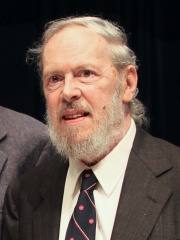
5. Dennis Ritchie (1941 - 2011)
With an HPI of 71.29, Dennis Ritchie is the 5th most famous American Computer Scientist. His biography has been translated into 84 different languages.
Dennis MacAlistair Ritchie (September 9, 1941 – c. October 12, 2011) was an American computer scientist. He created, together with long-time colleague Ken Thompson, the Unix operating system, C programming language, and B programming language. Ritchie and Thompson were awarded the 1983 ACM Turing Award, the IEEE Richard W. Hamming Medal from the Institute of Electrical and Electronics Engineers (IEEE) in 1990, and the National Medal of Technology from President Bill Clinton in 1999. Ritchie was the head of Lucent Technologies System Software Research Department when he retired in 2007.

6. Frances E. Allen (1932 - 2020)
With an HPI of 70.82, Frances E. Allen is the 6th most famous American Computer Scientist. Her biography has been translated into 41 different languages.
Frances Elizabeth Allen (August 4, 1932 – August 4, 2020) was an American computer scientist and pioneer in the field of optimizing compilers. Allen was the first woman to become an IBM Fellow, and in 2006 became the first woman to win the Turing Award. Her achievements include seminal work in compilers, program optimization, and parallelization. She worked for IBM from 1957 to 2002 and subsequently was a Fellow Emerita.

7. Donald Knuth (b. 1938)
With an HPI of 70.32, Donald Knuth is the 7th most famous American Computer Scientist. His biography has been translated into 78 different languages.
Donald Ervin Knuth ( kə-NOOTH; born January 10, 1938) is an American computer scientist and mathematician. He is a professor emeritus at Stanford University. He is the 1974 recipient of the ACM Turing Award, informally considered the Nobel Prize of computer science. Knuth has been called the "father of the analysis of algorithms". Knuth is the author of the multi-volume work The Art of Computer Programming. He contributed to the development of the rigorous analysis of the computational complexity of algorithms and systematized formal mathematical techniques for it. In the process, he also popularized the asymptotic notation. In addition to fundamental contributions in several branches of theoretical computer science, Knuth is the creator of the TeX computer typesetting system, the related METAFONT font definition language and rendering system, and the Computer Modern family of typefaces. As a writer and scholar, Knuth created the WEB and CWEB computer programming systems designed to encourage and facilitate literate programming, and designed the MIX/MMIX instruction set architectures. He strongly opposes the granting of software patents, and has expressed his opinion to the United States Patent and Trademark Office and European Patent Organisation.

8. Ray Kurzweil (b. 1948)
With an HPI of 68.42, Ray Kurzweil is the 8th most famous American Computer Scientist. His biography has been translated into 45 different languages.
Raymond Kurzweil ( KURZ-wyle; born February 12, 1948) is an American computer scientist, author, entrepreneur, futurist, and inventor. He is involved in fields such as optical character recognition (OCR), text-to-speech synthesis, speech recognition technology and electronic keyboard instruments. He has written books on health technology, artificial intelligence (AI), transhumanism, the technological singularity, and futurism. Kurzweil is an advocate for the futurist and transhumanist movements and gives public talks to share his optimistic outlook on life extension technologies and the future of nanotechnology, robotics, and biotechnology. Kurzweil received the 1999 National Medal of Technology and Innovation, the United States' highest honor in technology, from President Bill Clinton in a White House ceremony. He received the $500,000 Lemelson–MIT Prize in 2001. He was elected a member of the National Academy of Engineering in 2001 for the application of technology to improve human-machine communication. In 2002 he was inducted into the National Inventors Hall of Fame, established by the U.S. Patent Office. He has 21 honorary doctorates and honors from three U.S. presidents. The Public Broadcasting Service (PBS) included Kurzweil as one of 16 "revolutionaries who made America" along with other inventors of the past two centuries. Inc. magazine ranked him No. 8 among the "most fascinating" entrepreneurs in the United States and called him "Edison's rightful heir".

9. Marvin Minsky (1927 - 2016)
With an HPI of 68.38, Marvin Minsky is the 9th most famous American Computer Scientist. His biography has been translated into 56 different languages.
Marvin Lee Minsky (August 9, 1927 – January 24, 2016) was an American cognitive and computer scientist concerned largely with research in artificial intelligence (AI). He co-founded the Massachusetts Institute of Technology's AI laboratory and wrote extensively about AI and philosophy. Minsky received many accolades and honors, including the 1969 ACM Turing Award. He is known as the "father of AI".
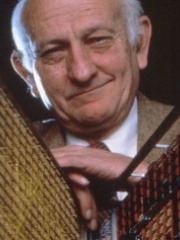
10. John Cocke (1925 - 2002)
With an HPI of 68.32, John Cocke is the 10th most famous American Computer Scientist. His biography has been translated into 29 different languages.
John Cocke (May 30, 1925 – July 16, 2002) was an American computer scientist at IBM and recognized for his large contribution to computer architecture and optimizing compiler design. He is considered by many to be "the father of RISC architecture." He won the 1987 ACM Turing Award.
People
Pantheon has 136 people classified as American computer scientists born between 1894 and 1989. Of these 136, 87 (63.97%) of them are still alive today. The most famous living American computer scientists include Richard Stallman, Barbara Liskov, and Donald Knuth. The most famous deceased American computer scientists include Grace Hopper, John McCarthy, and Dennis Ritchie. As of April 2024, 9 new American computer scientists have been added to Pantheon including Terry A. Davis, Greg Kroah-Hartman, and Jeff Dean.
Living American Computer Scientists
Go to all RankingsRichard Stallman
1953 - Present
HPI: 80.58
Barbara Liskov
1939 - Present
HPI: 71.50
Donald Knuth
1938 - Present
HPI: 70.32
Ray Kurzweil
1948 - Present
HPI: 68.42
Don Norman
1935 - Present
HPI: 68.16
Andrew S. Tanenbaum
1944 - Present
HPI: 67.79
Ken Thompson
1943 - Present
HPI: 67.07
Alan Kay
1940 - Present
HPI: 66.78
Vint Cerf
1943 - Present
HPI: 66.28
Larry Page
1973 - Present
HPI: 66.27
Ward Cunningham
1949 - Present
HPI: 65.87
Richard E. Stearns
1936 - Present
HPI: 65.56
Deceased American Computer Scientists
Go to all RankingsGrace Hopper
1906 - 1992
HPI: 80.29
John McCarthy
1927 - 2011
HPI: 72.27
Dennis Ritchie
1941 - 2011
HPI: 71.29
Frances E. Allen
1932 - 2020
HPI: 70.82
Marvin Minsky
1927 - 2016
HPI: 68.38
John Cocke
1925 - 2002
HPI: 68.32
John Backus
1924 - 2007
HPI: 67.57
Dorothy Vaughan
1910 - 2008
HPI: 66.50
George Dantzig
1914 - 2005
HPI: 66.07
Arthur Samuel
1901 - 1990
HPI: 66.01
Hal Finney
1956 - 2014
HPI: 65.44
Charles Bachman
1924 - 2017
HPI: 64.31
Newly Added American Computer Scientists (2025)
Go to all RankingsTerry A. Davis
1969 - 2018
HPI: 46.61
Greg Kroah-Hartman
HPI: 42.72
Jeff Dean
1968 - Present
HPI: 42.10
Rich Skrenta
1967 - Present
HPI: 39.26
Eric Bina
1964 - Present
HPI: 39.08
Jordan Hubbard
1963 - Present
HPI: 38.96
Dave Hyatt
1972 - Present
HPI: 38.70
Valerie Aurora
HPI: 37.00
Justin Frankel
1978 - Present
HPI: 35.89
Overlapping Lives
Which Computer Scientists were alive at the same time? This visualization shows the lifespans of the 25 most globally memorable Computer Scientists since 1700.

